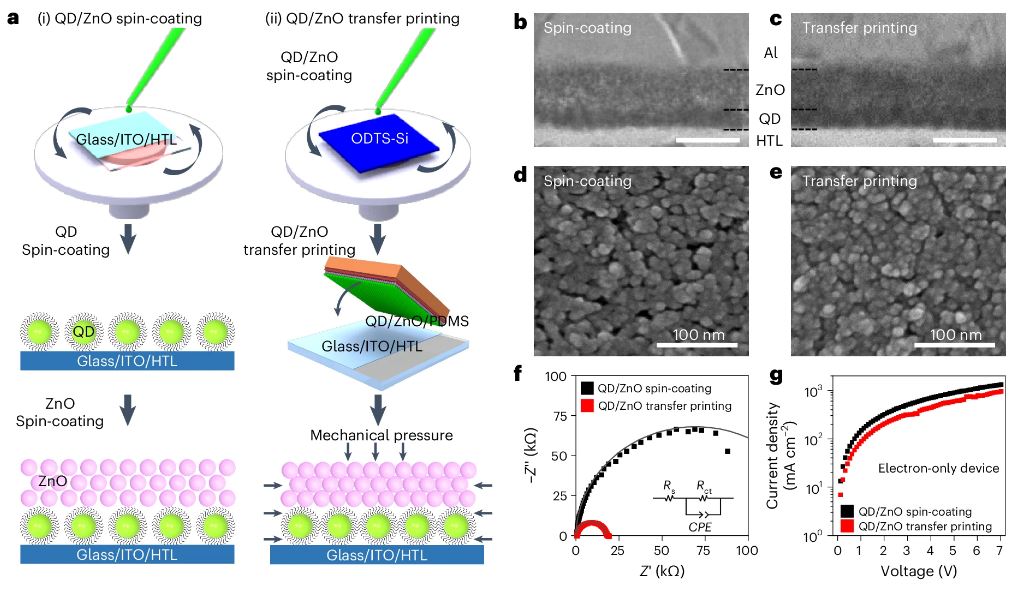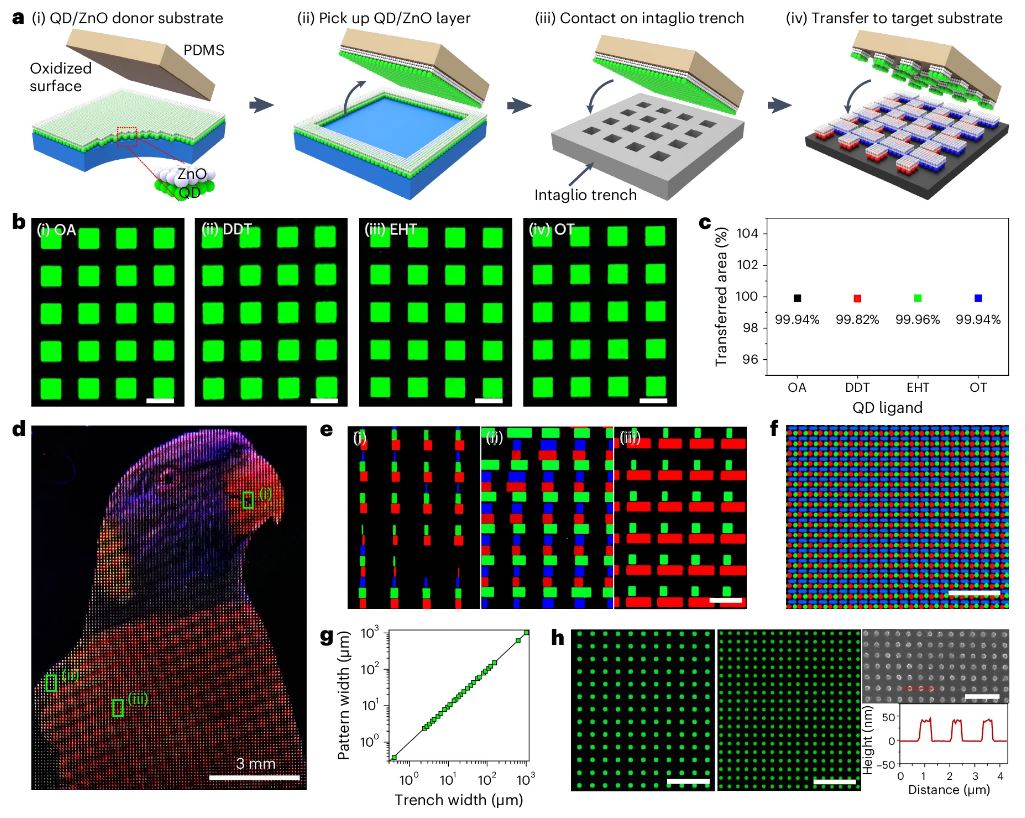Aug 30, 2024
JooHyeon Heo
A research team, affiliated with UNIST has developed an innovative quantum dot display that boasts ultrahigh resolution and exceptional luminous efficiency, designed to significantly elevate the immersive experience in augmented reality (AR) and virtual reality (VR) environments.
This groundbreaking work has been led by Professor Moon Kee Choi and her team from the Department of Materials Science and Engineering at UNIST, in collaboration with Professor Jiwoong Yang from DGIST and Director Taeghwan Hyeon ofthe IBS Center for Nanoparticle Research. They have introduced a novel double-layer (DL) transfer printing technology that allows for the simultaneous application of both the light-emitting layer and the electron transport layer onto a substrate. This advancement minimizes current leakage, enabling displays to emit bright light even at low current levels.
The team has achieved a luminous efficacy of approximately 23%, coming remarkably close to the theoretical limit. They also reached a world-class external quantum efficiency (EQE), while achieving an unprecedented pixel size resolution of 400 nm. To illustrate, each pixel is only one-250th the thickness of a human hair, providing about six times the resolution of Apple’s Vision Pro.

Figure 2. The schematic illustrations depicting the analysis of QD/ZnO DL films depending on the fabrication methods used.
This versatile patterning technology can be applied across various substrates, paving the way for large-area processes and the creation of ultra-thin, multi-color flexible displays. Quantum dots (QDs), celebrated for their exceptional color reproducibility and purity, are expected to play a vital role in the development of advanced smart wearable devices.
Using this cutting-edge thin film, the team successfully implemented an ultra-high resolution pattern with up to 20,526 pixels per inch (PPI) and expanded the display area to 8 cm x 8 cm through repetitive printing, thereby demonstrating the potential for mass production.
Professor Choi remarked, “We are committed to integrating QDs with high color reproducibility and purity into smart wearable devices through continued research in the future.”
This research was conducted with the support of the Ministry of Science and ICT (MSIT) and the National Research Foundation of Korea (NRF). The findings were published in the esteemed international journal, Nature Photonics on August 2, 2024.
Journal Reference
Jisu Yoo, Kyunghoon Lee, U. Jeong Yang, et al., “Highly efficient printed quantum dot light-emitting diodes through ultrahigh-definition double-layer transfer printing,” Nature Photonics, (2024).
Abstract
Highly efficient and high-definition displays with deformable form factors are highly desirable for next-generation electronic devices. Despite the unique advantages of quantum dots (QDs), including high photoluminescence quantum yield, wide colour range and high colour purity, developing a QD patterning process for high-definition pixels and efficient QD light-emitting diodes (QLEDs) is in its early stages. Here we present highly efficient QLEDs through ultrahigh-definition double-layer transfer printing of a QD/ZnO film. Surface engineering of viscoelastic stamps enables double-layer transfer printing that can create RGB pixelated patterns with 2,565 pixels per inch and monochromic QD patterns with ~20,526 pixels per inch. The close packing of both QDs and ZnO nanoparticles by double-layer transfer printing substantially minimizes the leakage current, enhancing the external quantum efficiency of our devices to 23.3%. Furthermore, we demonstrate highly efficient wearable QLEDs fabricated by our technique. This study paves the way for the development of highly efficient, full-colour QD displays via the transfer printing technique, demonstrating great promise for next-generation display technologies.
https://www.nature.com/articles/s41566-024-01496-x





